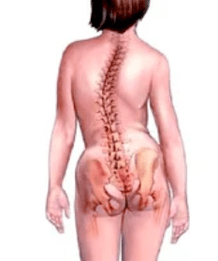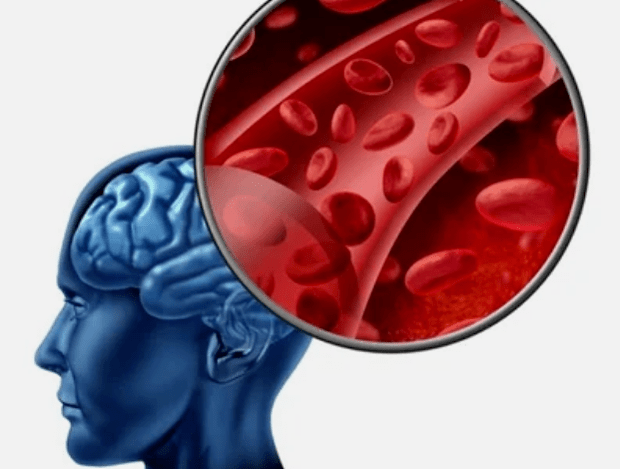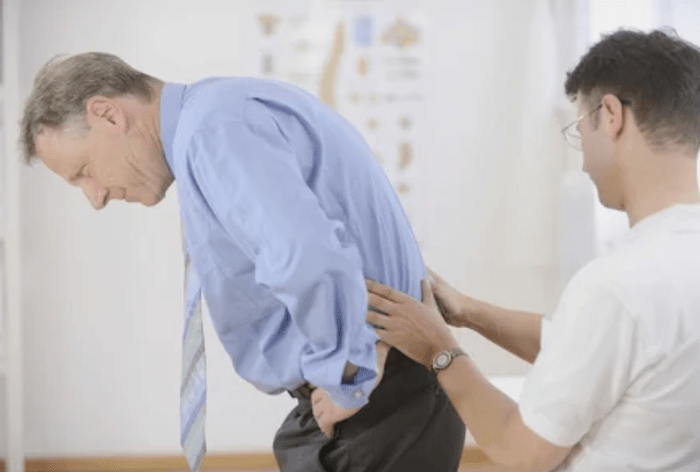Osteochondrosis of the cervical region is a serious pathology characterized by degenerative dystrophic changes in the structure of the intervertebral discs. This disorder often leads to dangerous complications. It is therefore strictly forbidden to ignore it. To deal with the disease, you should consult a specialist in a timely manner.

The essence of pathology
Osteochondrosis of the cervical spine is a pathology in which the soft intervertebral pulp is transformed into bone tissue. This causes the blood vessels and nerve fibers to pinch.
The characteristic characteristics of the disease include pain syndrome. It is located in the neck, shoulders, upper back, head. Many patients face dizziness, pressure fluctuations, nausea, air deficiency.
Remote changes in the cervical region are usually found in middle and old age. This is due to the vertical position of the skeleton and the characteristics of the cargo distribution.
Doctors note that the disease occurs early in men. This happens at 45-50 years old. Women face the manifestations of cervical osteochondrosis further at 50-55 years.
Reasons
Various factors lead to the development of this form of the disease. The main causes of cervical osteochondrosis include the following:
- Insufficient physical activity. People who lead an inactive lifestyle have a depletion of the back muscles, maintaining the spine. The deposition of salts that occur due to lactic acid can worsen this state of affairs. The weakened spine is easily deformed and becomes less mobile.
- Obesity. The appearance of excess weight is a great danger to the musculoskeletal system. In addition to the increased spinal stress, fat tissues take the beneficial substances that are necessary to maintain muscle tone and cartilage.
- Long stay in a fixed position. This disease is common in drivers and people who deal with intellectual work. After a prolonged stay in stew, cartilage tissues gradually lose elasticity. Over time, the intervertebral discs acquire an unnatural configuration.
- Nutrition disorders. In order for the body to work properly, proteins, fats, minerals and vitamins must be present in the diet. Ictual nutrition causes a violation of the structure of the tissues and leads to their rapid destruction.
- Back damage. This can lead to a redistribution of cartilage pressure, which provokes a change in their structure and shape.
- Pathology of the musculoskeletal system. This category includes scoliosis, rheumatism, bone tuberculosis.
Often cervical osteochondrosis is the result of a hereditary trend. In this case, the pathology develops without the influence of significant factors.
To prevent the disease from occurring, you should start therapy in a timely manner.

Stages of the disease
There are several stages of pathology, each characterized by certain characteristics:
- The first - the main characteristic of the condition is the instability of the spine. It manifests itself in the original lesions of the intervertebral discs;
- The second - the main manifestation is a convexity. This condition is characterized by a decrease in cracks between the vertebrae, a gradual disorder of the integrity of the fibrous ring. There is often pain caused by nerve compression;
- The third - at this stage the fibrous ring is completely destroyed. This leads to the appearance of intervertebral hernia. This condition is characterized by severe damage to the spine;
- The fourth is the most difficult. At this stage, acute pain occurs with each movement. Sometimes the condition improves, but this indicates the appearance of bone structures connecting the vertebrae. This leads to a decrease in motor activity and provokes damage.
Symptoms
This form of osteochondrosis is characterized by special manifestations. This is due to the close location of the cervical vertebrae and the low height of the discs. Therefore, even small changes cause serious manifestations. In addition, this form of osteochondrosis is often accompanied by compression of cerebrospinal roots.
Symptoms of cervical osteochondrosis include the following:
- Pain. They are localized in different areas - the back of the head, neck, shoulder girdle, hands. The discomfort in the hands or shoulder girdle is due to the pinching of the nerves. The pain syndrome in the back area is associated with spasms of muscle tissue of the neck and blood disorders.
- Weakness in the hands. This sign is due to damage to the motor nerves responsible for the innervation of the muscles of the hands.
- Weakening sensitivity in the hands. This characteristic is due to damage to the roots, which include sensitive fibers responsible for the innervation of the skin of the hands.
- Reducing the motor activity of the neck, the appearance of crunching. Such symptoms of osteochondrosis of the cervical spine are the result of a decrease in the height of the discs. They are also defeated by the intervertebral joints and the formation of bone growths of the vertebrae.
- Weakness, loss of coordination of movement and dizziness. These manifestations are due to damage to the spinal artery. The formation of fibrous tissue and displacement of the vertebrae causes problems with blood flow to the arteries. As a result, there is a deterioration of blood flow to the back of the brain and brain.
- Auditory worsening, tingling tongue, weakening of visual acuity. These symptoms of osteochondrosis of the cervical spine are due to the worsening of the situation and the progression of brain disorders of circulation.
Diagnostic methods
To identify osteochondrosis of the neck, you must perform a number of diagnostic procedures.The most information studies include the following:
- Magnetic resonance imaging is the most information study that allows you to evaluate the condition of the vertebrae and the discs between them. In addition, with the help of this procedure it is possible to detect hernia, to evaluate their size and localization.
- X -ray -This procedure is one of the most affordable methods of research. However, it often becomes uninformative, especially in the last stages of the disease.
- Computed tomography - allows you to identify the presence of changes in the structure of the vertebrae. However, the presence of hernia or compression of the spinal cord to diagnose is quite difficult.
- Duplex ultrasound scanning - helps to detect blood flow disorders in the vertebrae. The procedure allows you to detect obstacles and slowing blood flow to the vessels.
Methods of treatment
The treatment of cervical osteochondrosis is chosen to take into account various factors. This is done depending on the stage of the disease, the shape of the disease, the severity of the symptoms.
The main methods of therapy include the following:
- Conservative therapy - can be medicine and not -drug;
- Surgery;
- A combination of conservative methods and surgical treatment.
Methods of physiotherapy
Treatment of osteochondrosis of the cervical spine necessarily requires the use of basic methods of physiotherapy.
The most effective procedures include the following:
- Electrophoresis using medicines. Under the influence of electric current, the particles of medicines penetrate the desired area. Eufillin and Novocaine are used for the procedure. Thanks to this, it is possible to stimulate blood circulation and to achieve analgesic effect.
- Ultrasound exposure. Thanks to this procedure, it is possible to deal with the pain and stop inflammation. This technique also activates metabolic processes in the body.
- Magnetotherapy. With his help, it is possible to deal with the swelling and to have an analgesic effect.
- Laser exposure. This method helps to normalize blood circulation and helps to deal with inflammation.
The most effective exercises should include the following:
- Lie on your stomach, leave your hands on the floor, lift your head and torso. It is worth making sure that the back remains right. In this position it is necessary to stay 1-2 minutes. Then gently sink to the floor. Do 2-3 reps.
- Lie on your stomach, stretch your hands, turn your head to your left, and tap your ear on the floor. A similar movement to be performed to the right. Make 6-7 times in each direction.
- Sit down and, when you take a breath, bend down. Tap your breasts with your chin. Then exhale, turn back, throwing your head back. Perform 10-15 reps.
- Sit, put your palms on your forehead. Press your head in your hands for 30 seconds. You have to do 2-3 reps in total.
- Slowly turn your head in different directions. You have to make 10 rotations in each direction. When dizziness occurs, the exercise should be stopped.

Massage
To eliminate the signs of cervical osteochondrosis, you should definitely do a massage. The procedure should be performed as carefully as possible without effort. The movements should be extended to the neck, the place of the collar and the back.
It is best to do a massage in the lying position of the stomach.In extreme cases, a meeting of the procedure is allowed.
The technique is based on the use of such techniques:
- Straight - implies an effect on the surface areas of the skin. To do this, the palms of your hands or the tip of your fingers should stroke your back, moving from the head to the upper third of the back. You can also make a zigzag movements.
- Squeezing - consists in the effects on the deep areas of the skin in the upper third of the back. To do this, with the thumb and forefinger, the skin is captured. This should be done very carefully without affecting the tissues in the vertebrae.
- Rubbing - the procedure is performed to heat the skin and increase blood circulation in the collar area. It must be done very carefully without affecting the spinous areas of the vertebrae.
- Mix - it is quite rare as it implies the effect on deep tissues. This can only worsen the anomaly.
With osteochondrosis, a self -massage can be performed.To do this, it is convenient to sit down and use the methods for sneaking and rubbing your neck and shoulders. It is advisable to supplement the procedure with rubbing ointments that contribute to increased blood flow and relieve pain in the affected area.
Surgical treatment
Conducting surgery is shown in the following cases:
- The presence of neurological abnormalities is a disorder of motor activity, weakness or loss of sensitivity to the hands, loss of control over bowel movements. When such symptoms occur, you can suspect constant nerve damage. That is why it is so important to perform the operation to eliminate compression.
- The presence of constant pain that disrupts the quality of life of a person and cannot be eliminated by conservative methods.
With the development of cervical osteochondrosis, the following operations can be performed:
- Front cervical discoctomy and spondylodesis. The operation is performed through the anterior surface of the neck. The procedure is aimed at removing the affected disc, decompression of nerve fibers and implantation of a special device to maintain the desired distance between the vertebrae.
- Replacing the intervertebral disc. In this case, the affected disc is removed and instead inserted artificial. Thanks to this procedure, it is possible to maintain motor activity.
Surgical interventions to eliminate neurological symptoms are highly effective. According to individual estimates, it is 80-90 %. However, such methods are not effective enough in eliminating pain associated with osteochondrosis.
Hazards
Cervical osteochondrosis is a serious type of pathology. There are many nerves and vessels responsible for the nutrition of the brain in this area of the spine. In addition, the cervical vertebrae fit tightly. Therefore, even small changes in this area cause the blood vessels and nerves to be squeezed or displaced.
Cerebral blood flow disorders cause migraine, plant dystonia, hypertension. There is also a risk of problems with the functioning of the respiratory system, cardiac and blood vessels. Many people are impaired by hearing, visual acuity decreases, the coordination of movements suffers.
In difficult situations, cervical osteochondrosis provokes spinal artery syndrome. This vessel is responsible for the blood supply to the cerebellum and the ongoing brain. With the compression of the artery, there is a risk of brain ischemia and the development of spinal stroke.
Also, the pathology can provoke damage to the nerve roots. This is manifested in the form of growth formation, the appearance of radiculopathy, loss of motor activity. The most difficult consequence of the disease is compression of the spinal cord, which can lead to a fatal result.
Prevention
In order to avoid the development of the pathology, it is worth observing simple rules:
- Systematically sports;
- Eat properly;
- Take vitamin preparations and chondroprotectors prescribed by a doctor;
- Avoid a long stay in uncomfortable position;
- Use orthopedic furniture;
- Choose clothes and shoes for a season, especially in winter.
Cervical osteochondrosis is a very dangerous disease that can lead to negative health effects.
To avoid serious complications, you should consult a doctor in a timely manner and clearly follow his recommendations.

























